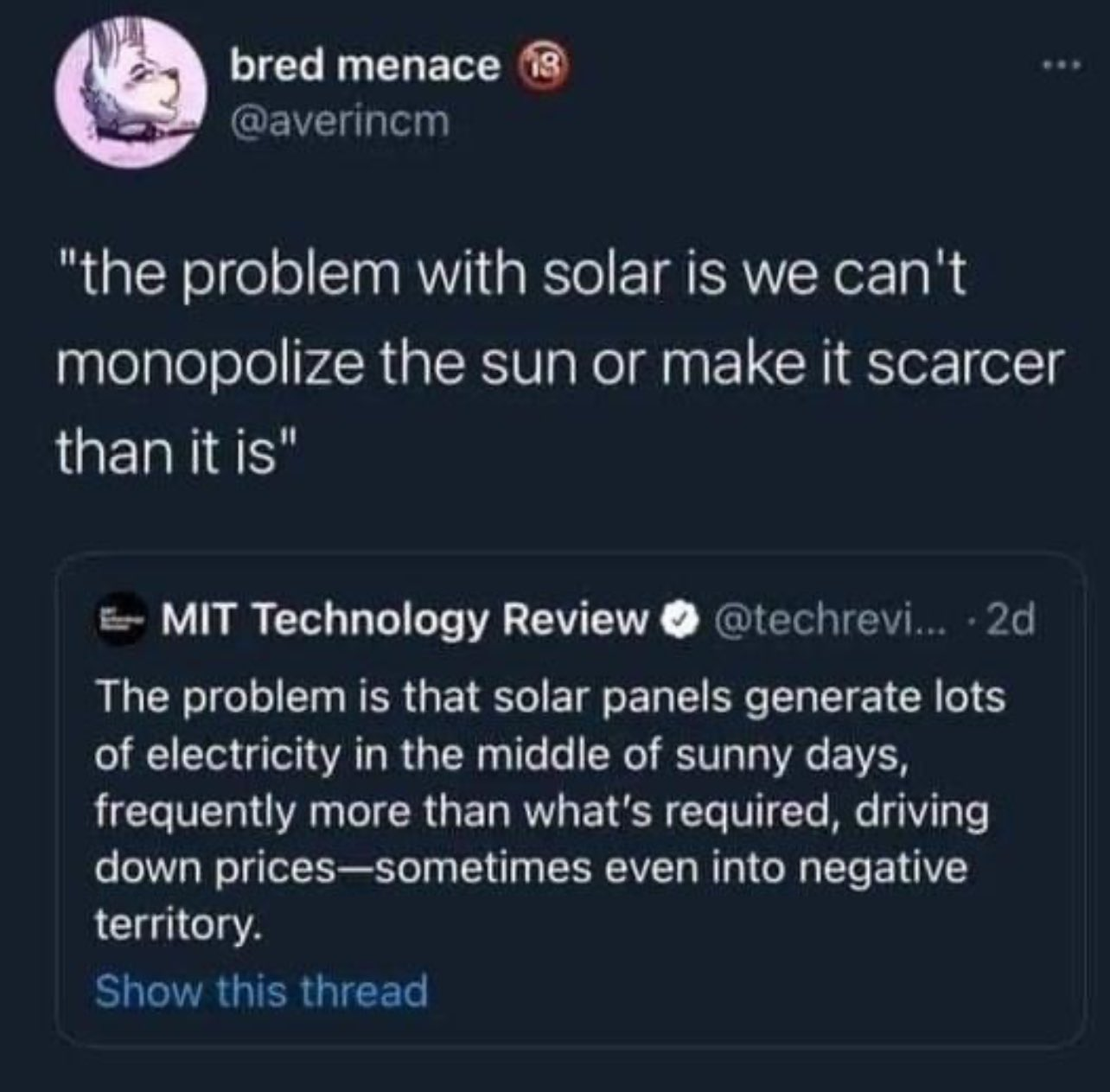this post was submitted on 02 Oct 2024
1691 points (95.6% liked)
Microblog Memes
5846 readers
1563 users here now
A place to share screenshots of Microblog posts, whether from Mastodon, tumblr, ~~Twitter~~ X, KBin, Threads or elsewhere.
Created as an evolution of White People Twitter and other tweet-capture subreddits.
Rules:
- Please put at least one word relevant to the post in the post title.
- Be nice.
- No advertising, brand promotion or guerilla marketing.
- Posters are encouraged to link to the toot or tweet etc in the description of posts.
Related communities:
founded 1 year ago
MODERATORS
you are viewing a single comment's thread
view the rest of the comments
view the rest of the comments

To be honest, at grid scale, I don't see why the answer to this today isn't that the government/energy companies just build a shit load of gravity batteries and use the basically free power times to build grid supply for when the sun's gone down.
Because "gravity batteries" is a stupid inefficient concept peddled by techbros to solve a huge problem with "a magic solution". In reality, they require either digging straight down like a mine shaft, but at huge scale, or a high rise building with all the weight concentrated on its top floor when the batteries are "charged". Wind would sway that shit left and right, the weight concentration would undermine / damage the building if it even was possible to build at scale.
Well, you can use dams.
so-called "gravity batteries" is pretty much exactly a dam with a mini-dam/reservoir at the bottom. When there is an excess, you run the motor to reverse the waterflow to pump uphill into a highe-elevation water retention pond/mini-dam.
This also helps reduce the amount of outflow water "lost" due to high-demand. Since you could take almost a day to fill the bottom reservoir and spend "wind"/solar to pump back the "lost" water downstream back into the higher-level reservoir.
Even if things are inefficient wind/solar are "renewable", so you can keep "wasting" excess to replenish the dam and still make enough money back ( think in-terms of drought, flooding, windy, sunny, cloudy, etc ) you can basically keep the high-output "system" always topped-up with water. And still supply water + electricity as it is needed. There is no "downside".
Not everyone agrees. So opinions can differ.